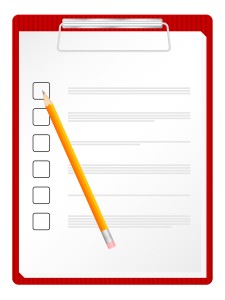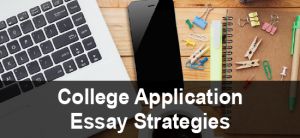YOU WANT TO EARN BETTER GRADES ON YOUR ESSAYS, BUT. . .
You’re confused.
Every teacher seems to have her own ideas about what constitutes a great essay. Even if all the teachers in your school have to use the same grading sheet and standards, there’s still a substantial amount of variability.
One of the biggest frustrations students have when it comes to writing is that they never feel like they know exactly what their teacher expects. . .even if she seems to have described everything very clearly.
I get it.
As a college English professor, I’ve heard hundreds of students ask, “What are you really looking for in our essays?”
Here’s the truth.
No matter how explicit I am about my expectations, the fact is there’s something about great essays that can’t be calculated ahead of time or reduced to a formula.
I need to know something about your ideas and see some of your writing before I can really help you get in sync with my standards. The same is true for most professors.
You’re probably starting to realize that you should meet with your teacher or give her a draft before you submit it to be graded. That is a really good idea.
But today I want to focus on something else–another strategy–that is really effective and then introduce you to a new way of connecting with your professors.
ARE YOU MAKING THIS BIG MISTAKE?
Do you consider the grade and comments you receive on your essay as the end of the writing process?
Many students just take a quick look at their grade, skim through the comments in the margins of their essay, and then never look at the paper again.
That’s a huge mistake, especially if you want to learn how to write great essays.
You have to see your professor’s feedback as the beginning–not the end–of your writing process.
Well, it’s not exactly the beginning of your process; it’s the beginning of the next phase of your process because now you know what your teacher is actually looking for in your essays and where you stand in relation to these expectations.
4 TIPS FOR WRITING A GREAT ESSAY
#1: PAY ATTENTION TO THE GENERAL FEEDBACK YOUR TEACHER PROVIDES AT THE END OF YOUR ESSAY
Yes, your grade is important, but if you’re really serious about learning how to write a great essay, you need to spend more time considering her general remarks about your work because that’s usually where she’s tipping you off to the main strengths and weaknesses of your essay.
Let’s consider the case of Mark, who earned a B on his essay. His professor wrote: “You do a great job using images to highlight important points, but you don’t spend enough time developing your analysis of the quotes from your sources.”
A. Start by getting clearer about your strengths as a writer.
Mark would highlight the imagery he used in his essay and jot down some notes about how he thinks it strengthened his points and enhanced the quality of his sentences.
Why do you need to do this?
You want to keep building on your strengths, and sometimes you’re not fully aware of them until you’ve gotten feedback from your teacher and reviewed your essay in relation to them.
B. Review your essay in relation to your weaknesses and make improvements.
Mark didn’t provide enough analysis of his quotes, so he’d zoom in on the points where he used quotes and then spend time trying to develop his explanation of them.
That’s right. I want you to actually make revisions.
It’s not good enough to just say, “Oh, yeah, that’s where I need to add more commentary.”
You have to take the time to make the changes.
It sounds like a lot of work, especially now that you’ve gotten your grade and can no longer officially revise your essay. But I’ve been teaching college-level writing and literature since 1993, and I’ve seen firsthand how effective this technique is for my students, so try it yourself and see what happens.
#2: CHECK OUT THE COMMENTS YOUR TEACHER MAKES WITHIN THE BODY OF YOUR ESSAY
Review any marks or comments your professor makes in the margins of your essay or in the actual body of it because this is where she usually offers more specific technical feedback on your writing. Then, work on improving these problem areas.
If the problem only comes up once, I wouldn’t worry about it much, but many times you’ll have a recurring problem and that merits more attention.
Let’s go back to our case study.
Mark’s professor pointed out one specific comma splice and told him that he had a number of other ones throughout his essay, so he’d want to start by getting very clear about what makes a sentence a comma splice. Then, he’d need to try to find and fix the other comma splices in his essay.
#3: CREATE YOUR OWN WRITING CHECKLIST
Why?
You need to develop your own writing worksheet to highlight your strengths and weaknesses as a writer. In your worksheet, you should also include examples from your own essays.
This approach supports you in your process of starting to use the feedback you get on your writing as a springboard for your continued development as a writer.
Let me show you what I mean by returning to our study of Mark.
In the section devoted to his strengths, Mark would enter his professor’s feedback about his use of imagery, examples of imagery from his essay, and his own ideas about why he thought this imagery strengthened his essay.
He’d do basically the same thing in his section on his weaknesses, except this time he would include one paragraph that didn’t have sufficient analysis and then show how he developed his explanation. In addition, he would mention comma splices, type out the rule, give an example of his own comma splice, and then provide a corrected version of the sentence.
When he starts writing his next essay, Mark will open up this document and think about how he can capitalize on his strengths and improve his weaknesses.
Of course, when he’s revising, editing, and proofreading, he’ll also consult his checklist. Once you get to this point in the writing process, I recommend that you go through your essay looking for one thing at a time. If you try to take everything into consideration, you’ll miss mistakes and end up feeling overwhelmed.
For instance, when Mark revises or edits his next essay, he’ll zero in on his analysis of quotes to make sure he is providing a more fully developed analysis of them. In the proofreading stage, he’d set aside five minutes to inspect his sentences and make sure there are no comma splices.
Yes, this approach takes time, but it is a very effective way of teaching yourself how to write great essays.
#4: TALK WITH YOUR TEACHER
So many students are nervous about doing this, but you’ve got to learn how to talk with your teachers, especially if you’re going to want them to write letters of recommendation for your college application.
You might be wondering why talking with your teacher is the fourth tip instead of the first.
Well, if you’re in high school or college, you need to do your own work before you set up a session with your professor.
HOW TO TALK WITH YOUR PROFESSOR
READY, SET, GO
What kind of impression do you think you’ll make on your teacher if you adopt this approach?
I challenge you to test out these strategies and see what a difference they make in terms of your ability to write great essays and earn the best possible grades.
Got questions or comments? Share them and I’ll get back to you.
Blog post images in order of use: ©Wavebreak Media Ltd/bigstock.com, ©Ronen/bigstock.com, ©July/bigstock.com





